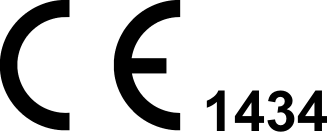N (S) 30 (+17,5)

Saletrosan 30 is a nitrogen and sulphur fertiliser that can be used during spring fertilisation of all crops. It is especially recommended for the spring fertilisation of winter cereals (1st and 2nd dose of nitrogen) and spring cereals, as well as winter oilseed rape, root crops, legumes, fodder crops, grasslands, vegetable cultivation and fruit plants.
PFC 1(C)(I)(a)(i): Straight solid inorganic macronutrient fertiliser
Fertiliser formula: N (S) 30 (+17,5) / 30 (+7)
Granulometry: Granules. 95% of the product is in the form of granules with dimensions of 2,0-6,3 mm.
Bulk density: 0,98 kg/dm3
Total nitrogen N: 30%
Nitric nitrogen N: 12%
Ammoniacal nitrogen N: 18%
Sulphur trioxide SO3 soluble in water: 17,5% (7% S)
Product components:
CMC 1 – Ammonium nitrate (CAS 6484-52-2)
CMC 11 – Ammonium sulphate (CAS 7783-20-2)
Saletrosan 30 is a fertiliser for pre-sowing and top dressing applications.
Approximate doses of Saletrosan 30 in kg/ha
|
Crop |
Needs of nitrogen fertilisation |
||
|
very small and small |
average |
big and very big |
|
|
Winter cereals |
170-200 |
230-270 |
300-350 |
|
Spring cereals |
170-200 |
230-270 |
300-330 |
|
Winter oilseed rape |
170-230 |
270-330 |
350-450 |
|
Maize |
170-230 |
270-330 |
350-450 |
|
Sugar beet* |
170-200 |
230-250 |
270-330 |
|
Potato (harvested at full physiological maturity)* |
170-200 |
230-270 |
300-330 |
|
Cruciferous vegetables |
170-230 |
270-330 |
350-450 |
|
Grasslands on mineral soils (meadows and pastures)* |
170-200 |
230-270 |
300-330 |
* without manure
The amount of the dose and the timeline of application of the fertiliser should be determined on the basis of: plant nitrogen and sulfur demand (unit intake x assumed crop yield per ha), plant condition, soil properties. Top up the nitrogen dose.
Saletrosan 30 should be transported ensuring that the product is protected against water, atmospheric precipitation, direct sunlight, and damage to the packaging. The product is classified as dangerous goods of class 5.1. "Oxidizing substances", UN number: 2067, packing group III according to ADR and RID transport regulations. According to ADR regulations: vehicles – orange warning plates at the front and rear of the vehicle; according to RID regulations: wagons – warning labels no. 5.1 on both side walls of the wagon.
H319: CAUSES SERIOUS EYE IRRITATION.
P264: Wash hands thoroughly after handling.
P280: Wear protective gloves, eye protection.
P305 + P351 + P338: IF IN EYES: Rinse cautiously with water for several minutes. Remove contact lenses, if present and easy to do. Continue rinsing.
P337 + P313: IF EYE IRRITATION PERSISTS: Get medical advice/attention.
P301 + P312: IF SWALLOWED: Call a POISON CENTER or doctor, if you feel unwell.
